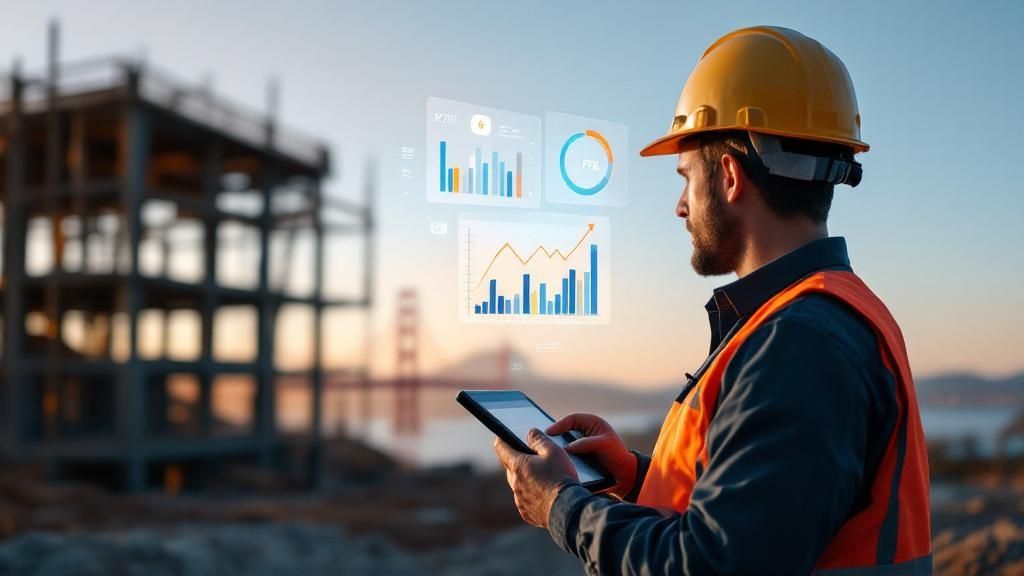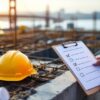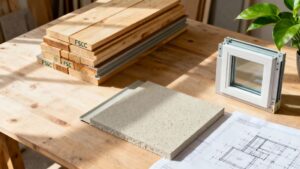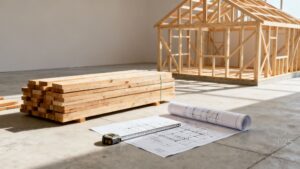In the high-stakes Bay Area construction scene, running a project on gut feelings is a surefire way to fall behind. This is where Construction Key Performance Indicators (KPIs) become your most valuable tool. Think of them not as just numbers, but as the vital signs for your project, giving you a real-time health check that replaces guesswork with sharp, data-driven decisions.
Why Bay Area Construction Demands a KPI-Driven Approach
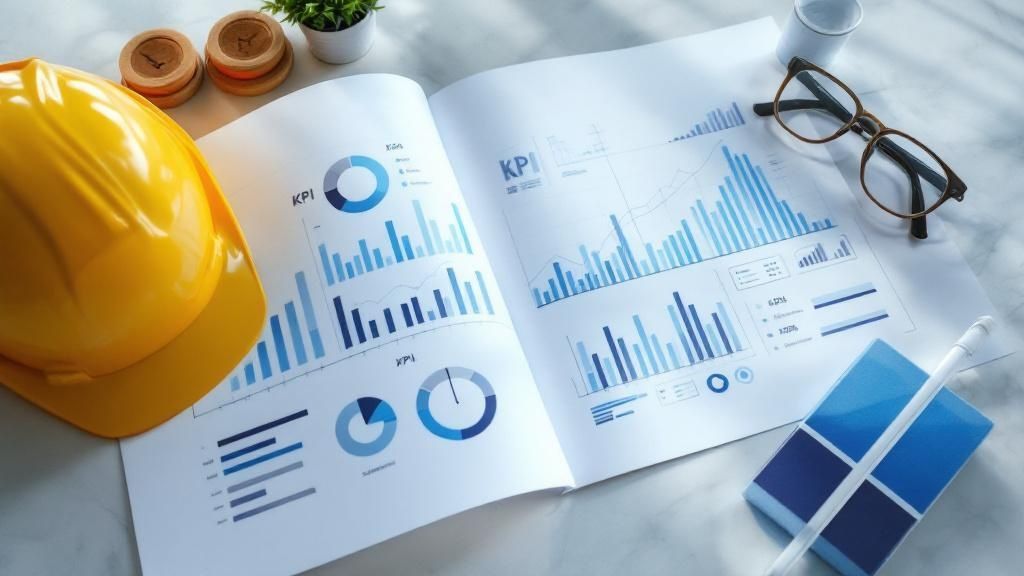
For anyone building in communities like Berkeley, Oakland, or San Francisco, the pressure is immense. We’re dealing with sophisticated clients, aggressive schedules, and margins that feel thinner by the day. Instinct alone just doesn't cut it anymore.
Construction KPIs are what let you measure what truly matters, transforming raw project data into intelligence you can actually use. When you use these indicators effectively, you're no longer just putting out fires. You can catch a budget overrun before it becomes a major problem, see a schedule slip before it jeopardizes your deadline, and ensure job site safety is always front and center.
Protecting Your Bottom Line in a High-Cost Market
Let's be honest: the Bay Area is a notoriously expensive place to build. From the cost of building materials to local labor rates and the maze of regulations, everything seems designed to squeeze your profitability. Without clear metrics, it's dangerously easy for hidden costs to quietly eat away at your profit.
By actively tracking financial KPIs, you get a transparent look at where your money is going. This financial clarity is absolutely essential for making smart, timely decisions that protect your margins and keep your business healthy for the long haul. Digging into the right metrics is one of the most effective strategies for improvements in your construction business.
Meeting Tough Client and Bay Area Regulatory Standards
Clients today are more savvy than ever. They want transparency, they expect you to hit your dates, and they demand quality. KPIs give you the hard data to keep them in the loop, manage expectations realistically, and prove you're delivering what you promised.
In a market where your reputation is everything, consistently hitting your project goals is your best form of marketing. KPIs provide the framework that helps you deliver every time, building the trust that leads to repeat business.
On top of that, navigating the complex web of local building codes—like California's demanding Title 24 energy standards—requires meticulous record-keeping. Performance metrics are your proof of compliance, helping you avoid costly fines and the headache of rework.
Core KPI Categories for Construction Projects
A well-rounded KPI strategy touches every part of your project. The table below outlines the core categories that give you a complete picture of your performance.
| KPI Category | What It Measures | Example Metric |
|---|---|---|
| Project Controls | The health of your schedule and budget. | Cost Performance Index (CPI) |
| Quality Control | The number of defects and rework needed. | Rework Percentage |
| Safety | The frequency and severity of job site incidents. | Total Recordable Incident Rate (TRIR) |
| Financial | The overall profitability of the project. | Gross Profit Margin |
| Productivity | The efficiency of your labor and equipment. | Labor Productivity Rate |
By monitoring metrics across these key areas, you gain a holistic view that prevents blind spots and enables smarter, more balanced decision-making.
Staying Resilient Through Economic Shifts
The construction industry always feels the effects of the wider economy. We saw this firsthand when global construction growth slowed in the first quarter of 2025, with the Construction Sentiment Index dropping from +17 to +9. This kind of shift can quickly cool down industry confidence and affect project pipelines.
For those of us building in the Bay Area, this just underscores that operational efficiency isn't a "nice-to-have"—it's our primary defense against market volatility. Solid construction KPIs act as your command center dashboard, giving you the clarity to guide your projects confidently, no matter what the economic forecast says. It’s how you build smarter, not just harder.
Choosing the Right KPIs for Your Bay Area Project
Not every metric is created equal. The real skill is picking a handful of high-impact indicators that speak directly to what success looks like for that specific job. A custom home build in a quiet Berkeley neighborhood has a totally different set of priorities than a multi-unit remodel in the heart of San Francisco.
Your goal should be to choose KPIs that tell a clear story about what matters most. Whether that’s a happy client, a healthy profit margin, or hitting tough sustainability targets, the right metrics keep you focused.
Tailoring KPIs to Your Project Type
The first place to look for guidance is the project itself. Is it a high-touch residential renovation or a fast-paced commercial job? The answer will point you toward the right metrics.
- Residential Remodels: For these projects, the client experience is everything. Focus on KPIs like Client Satisfaction Score, the Number of Change Orders, and Rework Percentage.
- New Custom Homes: Here, you're balancing client happiness with the bottom line. It’s smart to track Gross Profit Margin, Schedule Variance, and the Waste Diversion Rate—especially with the Bay Area's strict green building standards.
- Commercial Builds: On bigger jobs, efficiency and risk are the name of the game. Keep a close eye on the Cost Performance Index (CPI), Schedule Performance Index (SPI), and your Total Recordable Incident Rate (TRIR).
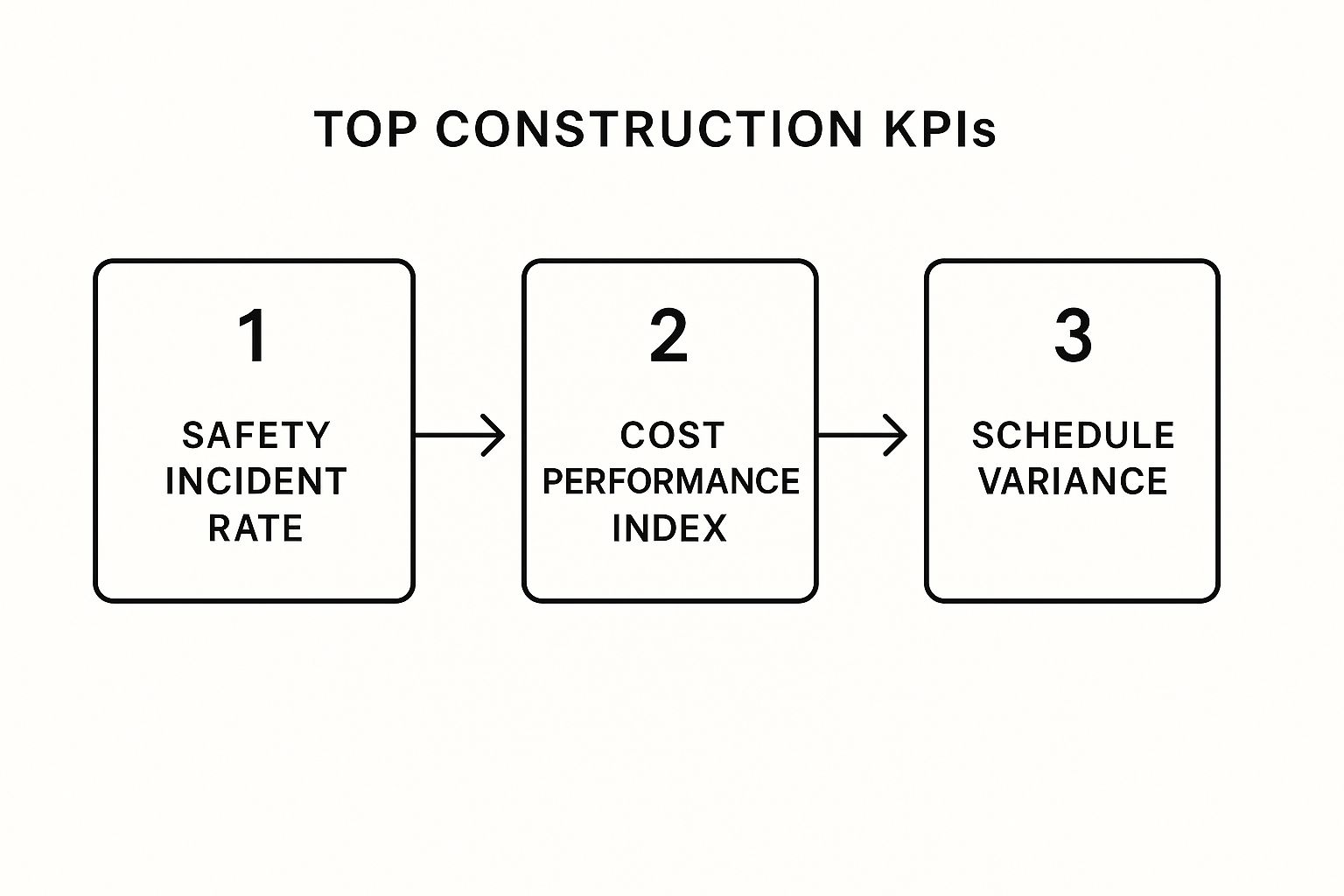
Image Alt Text: A diagram showing the three fundamental construction KPIs: Safety, Cost, and Schedule.
Starting with these fundamentals—Safety, Cost, and Schedule—gives you a powerful, at-a-glance health check on your project without overwhelming your team.
Factoring in Bay Area Building Specifics
Working in the Bay Area adds another layer to this. You can't ignore the local building codes, unique client expectations, and the huge emphasis on sustainability. These factors absolutely have to inform your KPI choices.
For instance, compliance with California’s Title 24 energy code is non-negotiable. So why not make Building Energy Performance a KPI and measure it against the code’s specific targets? For eco-conscious clients in Oakland or Berkeley, tracking the Percentage of Locally Sourced Materials can be a game-changer.
Understanding the local landscape is a huge part of success here. For a deeper dive into regional challenges, our guide on the construction process in San Francisco is a great resource.
My best advice? The best KPI strategy is one that evolves. Start with a small, manageable set of metrics. Once you get a feel for tracking and analyzing the data, you can start layering in more nuanced KPIs to get deeper operational insights.
How to Start Small and Stay Focused
The biggest mistake builders make is trying to measure everything from day one. It’s an approach that almost always backfires, leading to confusion and, eventually, giving up on KPIs altogether. A much better way is to start with just three to five core indicators that target your biggest headaches.
A Practical Starting Point:
- Cost: Track just one profitability metric, like Gross Profit Margin.
- Schedule: Pick a single indicator for timeliness, such as Schedule Variance.
- Safety: Choose one core safety metric. Days Without a Lost-Time Incident is a classic for a reason.
- Quality: Monitor one simple indicator of craftsmanship—the Number of Items on Punch List is perfect.
By keeping your focus narrow at the beginning, you make the whole process manageable. It ensures the data you collect actually gets reviewed and, more importantly, acted upon.
Tracking Financial KPIs That Protect Your Bottom Line

Image Alt Text: Construction manager reviewing financial documents and blueprints on a job site.
Let's talk about what really keeps a construction business afloat: profitability. In a high-cost market like the Bay Area, it’s the lifeblood of your company. The difference between a thriving contractor and one just scraping by often comes down to active financial management.
This means getting laser-focused on the financial KPIs that directly impact your margins. When you watch the right numbers, you can catch budget bleeds early and ensure every single job is actually making you money.
Getting a Grip with Cost and Schedule Performance
Two of the most powerful tools in your financial toolbox are the Cost Performance Index (CPI) and the Schedule Performance Index (SPI). These standardized metrics from earned value management give you a crystal-clear assessment of a project's health. They tell you by how much you're on or off track.
- Cost Performance Index (CPI): This is your cost-efficiency gauge. A CPI over 1.0 is great—you're under budget. A CPI under 1.0 is a red flag that you're spending more than you planned.
- Schedule Performance Index (SPI): This measures how well you’re sticking to the timeline. An SPI above 1.0 means you're ahead of schedule, while anything less than 1.0 shows you're falling behind.
Imagine your CPI dips to 0.95 on a Berkeley remodel. That's an immediate, data-backed warning that for every dollar you've spent, you've only gotten 95 cents worth of completed work. Catching this early is what saves a project's profitability.
Key Financial KPI Formulas and Benchmarks
To keep things straightforward, here's a quick reference table for the most crucial financial KPIs you should be tracking. Understanding how to calculate them and what they mean is the first step toward better project control.
| Financial KPI | Formula | What It Tells You |
|---|---|---|
| Gross Profit Margin | (Revenue – Direct Costs) / Revenue | The core profitability of a single project, excluding company overhead. |
| Cost Performance Index (CPI) | Earned Value (EV) / Actual Cost (AC) | Your budget efficiency. >1.0 is under budget; <1.0 is over budget. |
| Schedule Performance Index (SPI) | Earned Value (EV) / Planned Value (PV) | Your timeline efficiency. >1.0 is ahead of schedule; <1.0 is behind. |
| Working Capital | Current Assets – Current Liabilities | Your short-term financial health and ability to cover daily operational costs. |
Think of these formulas not as homework, but as the readouts on your project's dashboard. A quick glance can tell you whether you're cruising smoothly or need to pull over and check the engine.
Zeroing In on Your Profit Margins
While CPI and SPI are fantastic for on-the-job health checks, your gross profit margin is the ultimate scorecard for a project's financial success. This KPI shows you exactly how well you managed a specific job's direct costs.
Gross Profit Margin = (Revenue – Direct Costs) / Revenue
This is a critical metric. It gives you a true sense of how well you bid the job and managed your resources—from labor to materials—during execution.
In a competitive market, a few percentage points on your margin can be the difference between a good year and a great one. Tracking this consistently helps you learn which project types are most profitable and refine your bidding strategy.
This is more important than ever. With global construction spending forecasted to hit $15.6 trillion by 2025, driven in part by initiatives like the U.S. Infrastructure Investment and Jobs Act (IIJA), competition is only getting fiercer. You can dive into the full S&P Global construction outlook here to see the trends putting pressure on margins.
Why Cash Flow is Still King
Profit on a spreadsheet doesn't pay the bills. If you don't have cash in the bank to pay your crew or your suppliers, your project will grind to a halt. That's why cash flow and working capital are non-negotiable KPIs.
- Cash Flow: This is the literal movement of money in and out of your business. Positive cash flow is what allows you to meet every payroll and pay every invoice on time.
- Working Capital: Calculated as Current Assets minus Current Liabilities, this number shows your operational flexibility. Healthy working capital means you can handle unexpected expenses without breaking a sweat.
Having the right building material supplies in San Francisco delivered when you need them depends on your financial stability. Keeping a close eye on cash flow isn't just good accounting; it's how you protect your timeline, reputation, and peace of mind.
Using Performance Metrics to Enhance Safety and Quality
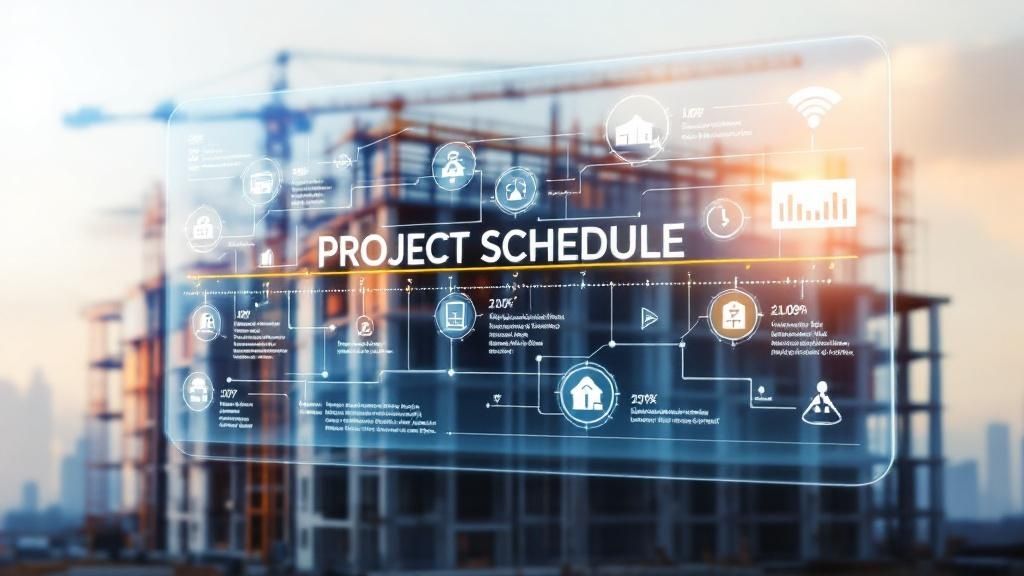
Image Alt Text: A construction worker wearing a hard hat and safety vest on a Bay Area job site.
Beyond the balance sheet, two things truly define a contractor's reputation in the Bay Area: safety and quality. The right KPIs give you the hard data you need to stop just hoping for the best and start actively managing for excellence. When you track performance in these areas, you're protecting your most valuable assets—your crew and your reputation.
Tracking Safety KPIs to Protect Your Crew and Your Business
A safe job site is the bedrock of any successful project. A strong safety record also lowers insurance premiums, prevents costly shutdowns, and boosts team morale.
One of the most important metrics is the Lost Time Injury Frequency Rate (LTIFR). This KPI calculates the number of lost-time injuries per million hours worked, giving you a standardized benchmark to measure safety performance. A consistently low or declining LTIFR is a strong signal that your safety protocols are actually working.
For example, a Bay Area contractor noticed their LTIFR was creeping up during the rainy season. After digging into reports, they found a pattern of slips near excavation sites. They brought in new matting and improved drainage protocols, which brought the rate right back down.
Another powerful KPI is tracking Days Without a Lost-Time Incident. This is a highly visible metric the entire crew can get behind. Celebrating milestones like "100 days accident-free" on your sites in Berkeley or Oakland reinforces a shared commitment to safety. Implementing programs like OSHA training specifically for construction is a proactive way to build a safer work environment.
Using Quality KPIs to Deliver Superior Craftsmanship
In a market this competitive, quality is what makes you stand out. Discerning clients in San Francisco and across the region expect flawless work, and quality-focused KPIs are the best tools to ensure you deliver. A fundamental quality KPI is Rework Frequency or Rework Cost. This tracks how often work must be redone, a direct hit to your profit and schedule.
Other vital quality metrics to watch include:
- Inspection Pass Rates: What percentage of your inspections pass on the first try? A high pass rate is proof of strong adherence to code and quality standards.
- Number of Punch List Items: A short punch list at the end of a project is one of the clearest signs of high-quality work from start to finish.
- Client Defect Reports: Keep an eye on the number of defects clients report after you've handed over the keys. This feedback is gold for improving your systems.
Tracking these indicators helps you pinpoint where quality is breaking down. This commitment to tracking and improving is a huge part of delivering customer service excellence for professional builders and earning that all-important repeat business.
Measuring Sustainability to Meet Bay Area Standards
In a market like the Bay Area, sustainability isn't just a buzzword—it's a fundamental expectation. For contractors in Berkeley, architects in Oakland, and remodelers across San Francisco, proving your commitment to green building is no longer optional.
Tracking the right environmental KPIs is what separates a vague promise of "being green" from a demonstrable, data-backed achievement. It’s how you prove your project meets tough local standards, like California's Title 24, and appeals to a client base that genuinely cares about eco-friendly construction.
Key Environmental KPIs for Bay Area Projects
To build a reputation as a leader in sustainable building, you need to focus on metrics that truly matter. They tell the story of your project's environmental impact and are powerful marketing tools.
Here are a few essential sustainability KPIs to start tracking:
- Waste Diversion Rate: What percentage of your construction debris is being recycled, reused, or salvaged? A high diversion rate is a powerful testament to your resourcefulness.
- Percentage of Locally Sourced Materials: This shows you're invested in the local economy and serious about cutting the carbon footprint from shipping materials.
- Building Energy Performance: How does the finished building's energy use stack up against official benchmarks? This is a direct measure of long-term efficiency and a huge selling point.
Imagine being able to tell a potential client in the Bay Area that your last project diverted 85% of its waste. That's the kind of concrete evidence that builds immediate trust and sets you apart from the competition.
Aligning KPIs with California's Green Building Codes
Here in California, you can't talk about construction without talking about environmental regulations. Title 24, Part 6, our state's Energy Code, lays down strict rules for energy efficiency in both new builds and major remodels. Tracking energy-related KPIs isn't just a good practice; it’s a requirement for compliance.
When you make energy performance a core KPI, you transform a regulatory hurdle into a measurable win. It gives you a systematic way to ensure every window, piece of insulation, and HVAC unit is pulling its weight to meet—or even beat—those tough state standards.
This proactive mindset helps you sidestep expensive delays and gives you tangible proof for your clients that you're building an efficient home. For a deeper dive, our overview of Bay Area green building practices is a fantastic resource.
The Global Push for Sustainable Construction
This intense focus on green building isn't just a Bay Area phenomenon; it's part of a massive global shift. The construction sector is responsible for roughly 34% of global energy-related CO₂ emissions, according to the 2024 Global Status Report for Buildings and Construction. The industry is now facing immense pressure to slash emissions.
This worldwide push is showing up in trends like the rise of green building certifications, which climbed from 15% of new commercial builds in 2020 to 20% in 2023 across OECD countries. For Bay Area builders, the message is loud and clear. Diligently tracking environmental KPIs positions your business at the forefront of a market that values responsible construction.
Frequently Asked Questions About Construction KPIs
How often should I review my construction KPIs?
It depends on the metric. Operational KPIs like safety incidents and daily progress should be checked daily or weekly. Financial and schedule performance indicators like CPI and SPI are best reviewed weekly or bi-weekly, while big-picture KPIs like gross profit margin and client satisfaction can be reviewed monthly or quarterly.
What’s the difference between a metric and a KPI?
A metric is any quantifiable measurement, like the number of hours worked. A Key Performance Indicator (KPI) is a metric that is directly tied to a strategic business goal, such as "achieving a Cost Performance Index (CPI) of 1.05 or higher" to ensure project profitability. All KPIs are metrics, but not all metrics are KPIs.
What is the best software for tracking construction KPIs in the Bay Area?
The best software depends on your business size and needs. Large firms often use comprehensive platforms like Procore or Autodesk Construction Cloud. Residential builders and remodelers in areas like Berkeley and Oakland might prefer a tool like Buildertrend, but a well-organized spreadsheet can be a great starting point for any business.
How do I get my team on board with using KPIs?
Be transparent about why you are tracking specific KPIs and how they help the entire team succeed. Frame them as tools for collective improvement, not for individual criticism. Celebrate when the team hits its targets and use missed targets as opportunities for collaborative problem-solving to build a culture of shared ownership.
Should I use the same KPIs for every construction project?
While some core KPIs like safety rates, budget variance, and schedule variance apply to most projects, you should tailor others to each job's unique goals. A high-end custom home in Berkeley may prioritize client satisfaction and material waste reduction, while a commercial project in San Francisco might focus more on the schedule performance and subcontractor ratings.
For more answers to common questions about building in our region, feel free to explore the extensive FAQ section on our website.
No matter what your next project looks like, having the right data and the right materials is the foundation for success. The team at Truitt & White has been a partner to Bay Area builders for decades, providing the expert advice and premium supplies you need to hit your targets. Visit our Berkeley showroom or connect with us today to get started.


